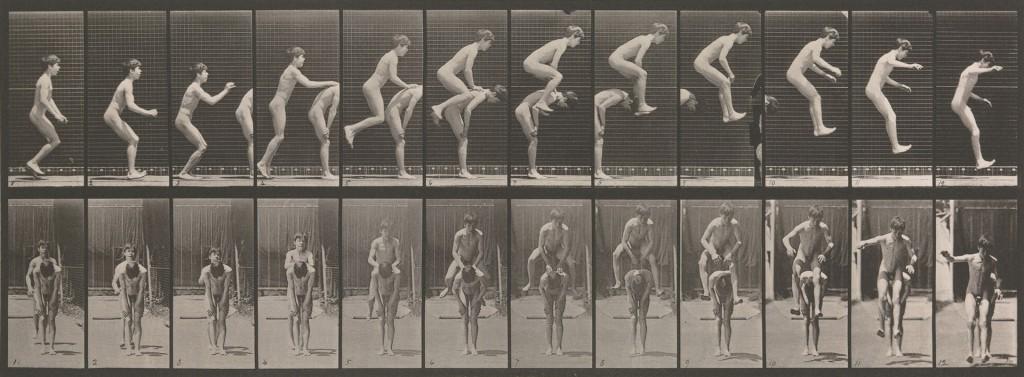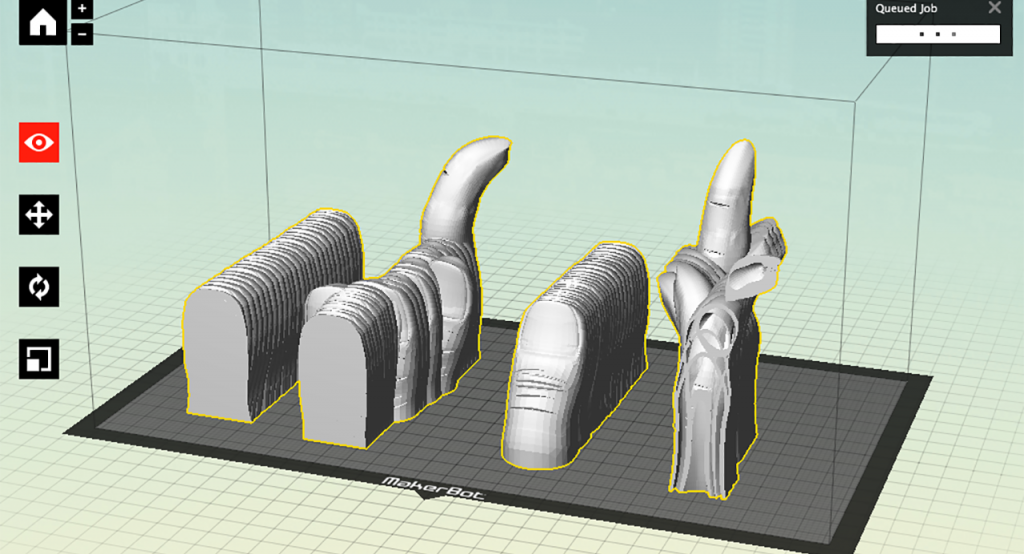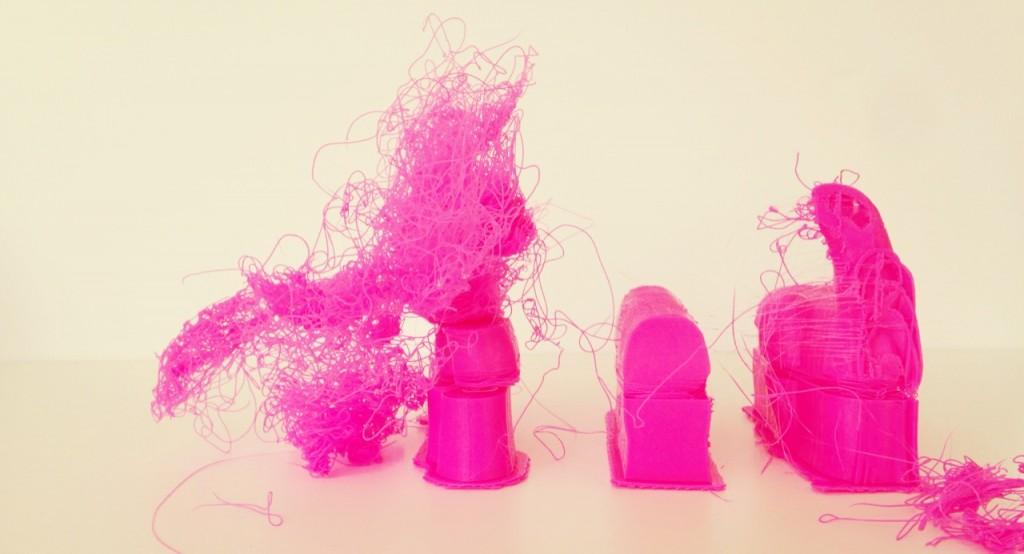Hong Kong native and visual artist Ka Lun Karen Chan, or “Chankalun,” as she prefers to be called, currently resides in Paris while attending the Parsons School of Design in the French capital.  Chankalun found her recent exploration of 3D printing nearly as exasperating as her ill-fated relationship with her (now ex-) boyfriend. A well-rounded student and experienced artist working in multiple media, Chankalun was confident in her capacity to learn a few new skills to facilitate the production of a sculpture inspired by her discovery of her boyfriend’s infidelity.
Chankalun found her recent exploration of 3D printing nearly as exasperating as her ill-fated relationship with her (now ex-) boyfriend. A well-rounded student and experienced artist working in multiple media, Chankalun was confident in her capacity to learn a few new skills to facilitate the production of a sculpture inspired by her discovery of her boyfriend’s infidelity.
Chankalun had been mulling over ideas for an artwork to submit to reFrag-Glitch, an art event co-sponsored by Parsons Paris and the School of the Art Institute of Chicago’s Film, Video, New Media and Animation Department and held in Paris from March 19th to the 23rd. Participants of the event were encouraged to consider the many ways in which “glitches manifest and/or are mobilized artistically in our lives.” What’s a glitch? According to the reFrag-Glitch site:
Glitches occur in our identity (de/re)constructions; instabilities and errors in digitized financial markets (i.e. flash crashes); hacking, cracking, and tactical glitches; Dirty New Media Art approaches and the non-neutrality of technological systems.
For Chankalun, the first glitch appeared in her troubled relationship with her boyfriend. She was cryptic about specifics, but revealed that she first became aware that he had cheated on her via a photograph that included his thumb. The discovery provoked a series of text messages and emails through which Chankalun grew increasingly more aware of the extent of her boyfriend’s dishonesty and betrayal. That was when it occurred to her that thumbs, whether typing, texting, or photo-bombing, were a consistent theme in the distressing narrative of her discovery and subsequent break-up.
Chankalun recalled a Chinese proverb about deceit that referenced thumbs and then drew a connection between the compounding of lies by her boyfriend and the legendary Italian wooden-puppet-turned-real-boy, Pinocchio, whose nose grew longer each time he told a lie. That’s when her 3D printed sculpture for reFrag-Glitch, Pinocchio’s Thumb, began to take shape.
“[The] thumb itself has a lot of meanings, which ironically contrasted to Pinocchio’s Thumb,” recalled Chankalun. “One would stamp the fingerprint of their thumbs as a promise, commitment and identification. One would thumbs-up to praise or encourage one another.”
With the concept for the artwork in place, Chankalun set out to establish her process. She undertook a crash course in 3D design program Rhino 5, so that she could create a 3D model that simulated a time-lapse image of her boyfriend’s thumb, repeated multiple times and extending through space like one of 19th-century British photographer Eadweard Muybridge’s running men or horses. As a counterpoint to her boyfriend’s thumb, Chankalun added her own thumb and fingers to indicate that she had actively, progressively, uncovered his many deceptions. She learned one of the most important lessons of 3D modeling: There’s no point in reinventing the wheel. In other words, rather than trying to create a model of a thumb or fingers from scratch, find an existing model and develop it as you wish.
Once she’d completed the 3D model, the real fun–and the additional glitches–began. In her first attempt at 3D printing Pinocchio’s Thumb, the MakerBot printer Chankalun was using at Parsons failed to print the piece beyond its base. Unbeknownst to the artist, those odd, flat pieces that resulted from those first failures were harbingers of the subsequent series of 3D printing glitches.
A second 3D printing glitch occurred when the MakerBot, left by Chankalun to print overnight, seemed to have stumbled midway through the piece, resulting in an object that resembled a miniature, hot pink loaf of bread. After several more print failures, she consulted with an instructor at Parson’s, who suspected that the latest 3D printing mishap–Chankalun’s design surmounted by a thick tangle of hair-like filament gone awry–was the result of a temperature change in close proximity of the MakerBot. In short, when she’d left the machine to print her piece overnight, someone had come into the room at least once and the temperature had been altered radically enough to disrupt the proper layer-by-layer application of the filament.
That’s when it struck Chankalun that the latest glitch was less problematic than it was serendipitous. The riotous, bright pink, hair-like mass spoke so adeptly to the tangled web of the relationship that she realized the MakerBot had been more of a muse than a foe. An unforeseen variable–the disruptive temperature change, the major glitch–had converted the orderly, high-tech manufacture of Pinocchio’s Thumb into some more complicated and organic. The final step or glitch in her creation process occurred when Chankalun painted the bright pink sculpture with multiple layers of white paint that failed to completely cover the pink beneath it, a deception not easily concealed.
Have you had an experience like this, where a glitch actually turns into a serendipitous design solution? Let us know about your experience, and your impression of Chankalun’s project, in the Pinocchio’s Thumb forum thread over at 3DPB.com.
Subscribe to Our Email Newsletter
Stay up-to-date on all the latest news from the 3D printing industry and receive information and offers from third party vendors.
Print Services
Upload your 3D Models and get them printed quickly and efficiently.
You May Also Like
Heating Up: 3D Systems’ Scott Green Discusses 3D Printing’s Potential in the Data Center Industry
The relentless rise of NVIDIA, the steadily increasing pledges of major private and public investments in national infrastructure projects around the world, and the general cultural obsession with AI have...
3DPOD 260: John Hart on VulcanForms, MIT, Desktop Metal and More
John Hart is a Professor at MIT; he´s also the director of the Laboratory for Manufacturing and Productivity as well as the director of the Center for Advanced Production Technologies....
Etsy Design Rule Change Reduces Selection of 3D Printed Goods
Online marketplace Etsy has implemented a rule change requiring all 3D printed goods on the site to be original designs. The update to the site’s Creativity Standards states, ¨Items produced using...
E-Beam OEM Wayland Additive Partners with USC Racing to 3D Print Titanium Exhaust Collector
Every year, standards organization SAE International holds a competition called Formula SAE, in which students from both undergraduate and graduate programs design, build, and race small formula-style race cars. For...




































